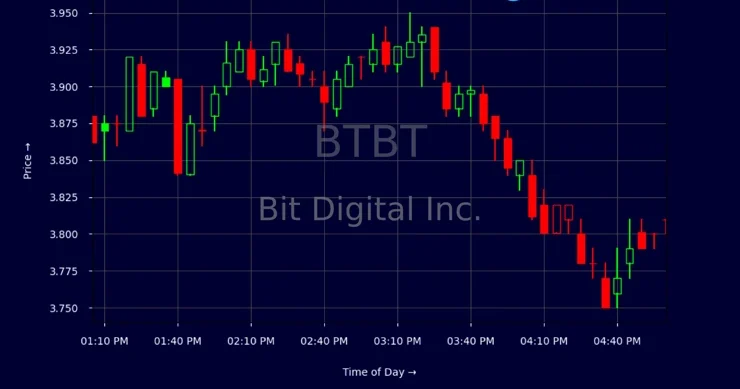Understanding Why the BT Share Price Fluctuates
The BT share price has experienced volatility in recent years, influenced by regulatory pressures, rising competition in the telecom market, and shifting investor sentiment. As a key player in the UK’s digital infrastructure, BT faces both challenges and opportunities. For shareholders, these fluctuations often create uncertainty about long-term value.
To improve resilience, BT must embrace innovative technology strategies that reduce operational risks, increase efficiency, and create new revenue streams. Below are five major tech-driven approaches that can help stabilize—and potentially grow—the BT share price in the coming years.
1. Cloud Integration for Cost Efficiency and Service Agility
Telecom companies manage vast amounts of data, which requires significant infrastructure costs. Cloud integration enables BT to cut down on expensive physical systems, streamline operations, and improve scalability.
- Lower costs: Transitioning customer data and back-office functions to the cloud reduces maintenance expenses.
- Faster services: Cloud-powered automation accelerates product launches.
- Customer personalization: Cloud analytics allow BT to track customer behavior, predict churn, and deliver more targeted services.
For investors, these benefits translate into leaner operations and improved margins, two factors that directly support a healthier BT share price.
2. Expanding 5G and IoT Capabilities
The rollout of 5G networks and the growing Internet of Things (IoT) ecosystem represent one of BT’s strongest growth opportunities.
- Enterprise demand: Businesses require 5G for smart cities, logistics, and industrial automation.
- Consumer adoption: Low-latency connections fuel streaming, gaming, and augmented reality.
- New markets: IoT applications—from connected cars to healthcare—create fresh revenue channels.
By expanding 5G infrastructure and aligning with IoT growth, BT can diversify its income while building investor confidence. These advancements provide a long-term foundation for stabilizing the BT share price, even during market turbulence.
3. Artificial Intelligence to Enhance Customer Experience
Customer satisfaction is a cornerstone of revenue stability in telecom. BT can deploy artificial intelligence (AI) to enhance experiences and lower service costs.
- AI-powered chatbots can resolve customer queries instantly, reducing call center costs.
- Predictive maintenance prevents network failures, keeping downtime to a minimum.
- Personalized services powered by AI analytics increase retention and reduce churn.
For shareholders, AI signals innovation, cost control, and stronger customer loyalty. Investors tend to reward companies that stay ahead of the curve, which in turn strengthens the BT share price.
4. Cybersecurity Investments to Protect Investor Confidence
With telecoms handling sensitive data, cybersecurity has become non-negotiable. A single breach could lead to reputational damage and stock price instability.
- Advanced encryption protocols safeguard customer information.
- AI-driven threat detection identifies cyber risks in real time.
- Zero-trust frameworks ensure that internal and external access is strictly monitored.
By prioritizing cybersecurity, BT not only protects its customer base but also reassures investors. A strong security posture minimizes reputational risks and creates stability, which directly supports the BT share price.
5. Digital Transformation and Automation for Long-Term Efficiency
Automation and digital transformation are critical for BT to stay competitive.
- Robotic Process Automation (RPA): Reduces manual tasks in billing, onboarding, and support.
- AI-driven service management: Cuts down on errors and improves customer service delivery.
- Data-driven decision-making: Enhances operational forecasting and resource allocation.
These changes improve efficiency, reduce costs, and demonstrate to investors that BT is committed to long-term profitability. A lean, future-ready organization is much more likely to stabilize and increase the share price over time.
Broader Industry Context: Why These Strategies Matter
BT isn’t the only telecom giant investing in these areas. Competitors like Vodafone and Deutsche Telekom are also expanding into 5G, AI, and automation. For BT to maintain its market share and reassure investors, it must adopt these strategies faster and more effectively.
According to recent market research, telecom companies that invested heavily in digital transformation saw up to a 20% increase in investor confidence compared to those that lagged behind. This highlights why BT must double down on innovation to ensure share price stability.
Conclusion: A Path to Sustainable Growth for the BT Share Price
The future of the BT share depends on the company’s ability to adapt to digital-first demands. By focusing on cloud integration, 5G and IoT expansion, AI-driven solutions, advanced cybersecurity, and digital transformation, BT can strengthen its market position and reassure investors.
For stakeholders, these initiatives provide not just short-term stability but also the foundation for sustainable, long-term growth. With consistent execution, BT has the potential to move beyond market fluctuations and deliver value to both customers and investors.





